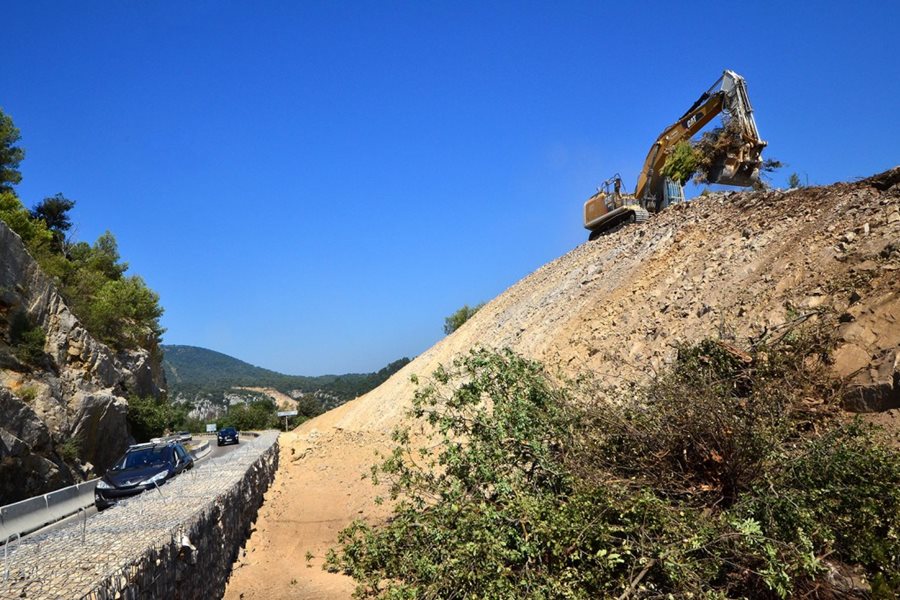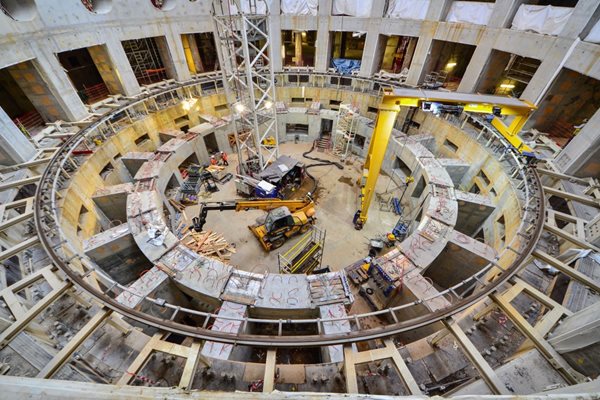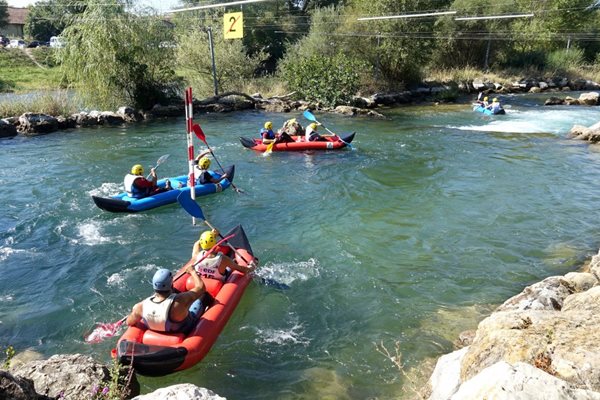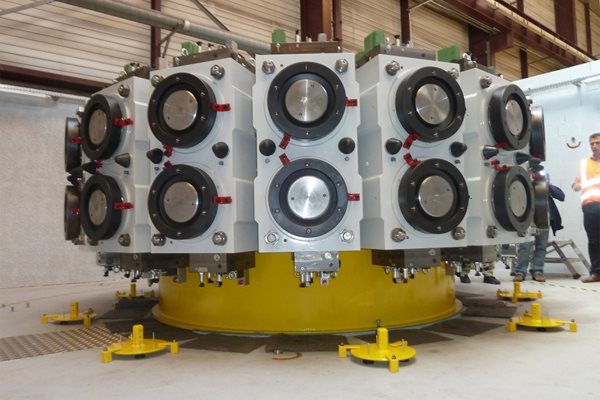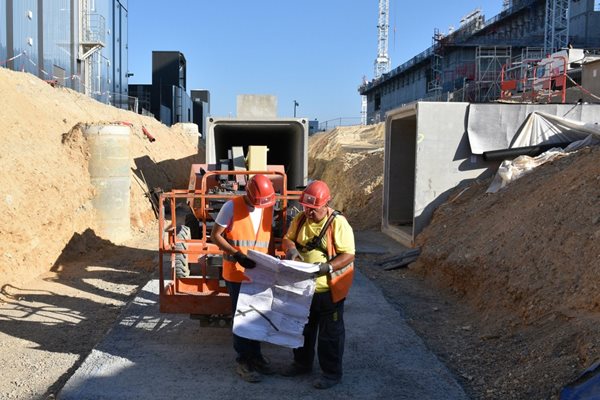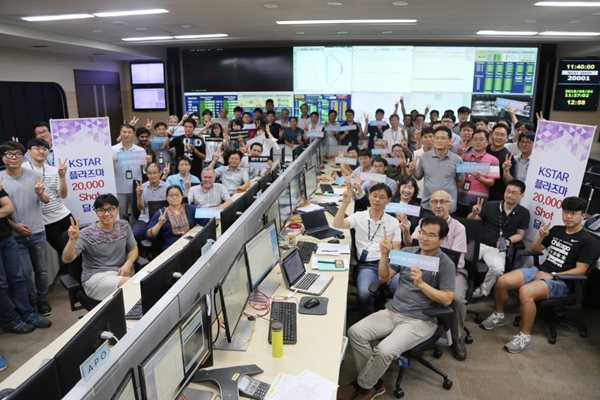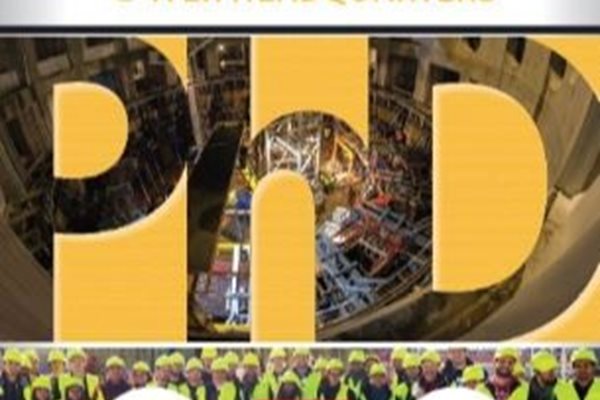
you're currently reading the news digest published from 03 Sep 2018 to 10 Sep 2018
featured5
of-interest1
event1
press2
featured
ITER Itinerary | Make way for the elephants!
Hannibal, crossing the Alps in the 3rd century BC, faced a critical problem: how would he get his elephants through the narrow mountain passes that opened to the plains of northern Italy he intended to march through? ITER logistics provider DAHER also has elephants to deliver to the ITER construction site. And like Hannibal two millennia ago, the company will encounter obstacles that have to be overcome. The historical parallel ends there, however. ITER's elephants are much larger and up to one hundred times heavier than Hannibal's, and modern technology offers more efficient rock-removal techniques than the pouring of vinegar on heated rocks¹. Still—ensuring the passage for the first ring-shaped coil of the ITER Tokamak (poloidal field coil #6, or PF6) was one of the most delicate, precise and complex operations the logistics operator has had to face since it began transporting ITER components along the ITER Itinerary in 2015. The geometry of the load and the particular topography of the terrain combine to explain the challenge. The package that contains PF6 (the second-smallest of the six coils that circle the vacuum vessel) is 12 metres long, 11 metres wide and a little more than 4 metres high. Originally, the load was meant to be transported in an inclined position, which would have allowed the passage through the narrowest sections of the ITER Itinerary. However, in order to minimize the risk of transport-related damage to the coil, this option was abandoned and it was decided instead to place the load flat on the trailer bed. The problem was that in this position, the load's width exceeded the Itinerary's gauge by almost two metres. Two 'blocking points' were identified: a 700-metre tree-lined section of road in the nearby village of Peyrolles, and a passage between two small cliffs a few kilometres ahead of the ITER site. Using laser measurements, 360-degree 3D scanning and 'point cloud' extraction, DAHER experts captured the precise topography of both sites, inserted a 3D model of the load sitting on its trailer, and produced an animated real-scale virtual rendition of the passage of the PF6 convoy. In the case of the tree-lined road, the degree of precision achieved by DAHER made it possible to identify every single branch that could potentially stand in the way of the convoy, decide which ones needed to be pruned, and plot an adapted slalom course for the trailer. The same techniques were applied to the cliff passage in order to minimize the amount of rock and vegetation to be removed, and hence the cost of the operation. Performed between 16 July and 9 August, the rock removal operation faced one additional challenge: operators needed to ensure that the vibrations generated by the excavators did not impact the concrete structure of the old water canal running under the road. Vibration frequencies and acceleration were monitored by an array of sensors, sending real-time information to all parties involved. At no time did the works threaten the integrity of the canal—a strategic waterway that powers a nearby hydro-electric plant and delivers drinking water to the city of Marseille. By 9 August, 1,700 cubic metres of rock had been removed and the vertical cliff cut to a 40-degree slant. The road is now open for the largest and most delicate elephants to be delivered to ITER: not only poloidal field coil #6, but also, beginning next year, the 18 toroidal field coils (10 metres wide, 17 metres high) that will also be able to travel in a flat position. ¹ According to Roman historians Polybius and Titus Livius, Hannibal, faced with a huge boulder blocking his way, had a pyre amassed around the stone and set afire. When the rock was red-hot and began fissuring, he had vinegar poured into the cracks. The chemical reaction between the hot limestone and the acetic acid contained in the vinegar accelerated the fracturing process. Using crowbars and wedges, sappers were then able to slit the rock and pry it to pieces.
Image of the week | The crown unveiled
This picture of the Tokamak's underlying support system, now almost finalized, is worth a thousand words. Seeing the 18 radial walls from above, it is easier to understand the parallel that has been drawn with the flying buttresses of medieval architecture. Eight hundred tonnes of concrete and 224 tonnes of steel went into this massive structure, one of the most strategic of the entire Tokamak Complex. The crown will support the combined mass of the machine and its enveloping cryostat (23,000 tonnes) and transfer mechanical, magnetic or thermal forces generated during operation in both normal and incidental situations to the building's structure. A little more than three months have passed since the first concrete pour took place on the night of 22 May. With the exception of an opening reserved for the first magnet feed component—a cryostat feedthrough for poloidal field coil #4—the circle is now closed. The red pipes that were part of the concrete cooling system will soon be filled with grout and their ends cut even with the concrete surface. Following the insertion of the cryostat feedthrough, the teams will begin to install the anchoring system for the 18 semi-spherical bearings that will stand between the concrete crown and the base of the cryostat.
ITER Games | The winning combination
This year's ITER Games, held for the 8th consecutive year, offered 600 participants from the ITER community and neighbouring towns the opportunity to compete in a number of sports events, including tennis, kayaking, trail running and mountain biking. The pétanque and football tournaments were intense, with players from all over the world ... some playing for the first time, and other old hands who could teach novices all about technique. The ITER Games are becoming a popular tradition for ITER staff and contractors to mingle with the local communities, get to know about the various sports associations they can join, and have a relaxing Saturday afternoon with colleagues, friends and family. The village of Vinon-sur-Verdon kindly offers its main square for a communal lunch with an entertaining award ceremony and an enthusiastic welcome from Mayor Cheilan. Healthy competition, Provençal sunshine, and good food in a beautiful setting—a winning combination for another successful ITER Games.
Pre-compression rings | An iron fist - in reverse
Knowing that the large electromagnetic forces at work during machine operation would cause stress over time to ITER's largest magnet set, engineers devised a compression system to 'push back.' The resilience of the solution—large composite 'pre-compression' rings that will encircle the tips of the toroidal field coil cases at top and bottom—is about to be tested at a dedicated facility. At a brand-new facility at CNIM (La Seyne-sur-Mer, France) everything is ready for the arrival of an exceptional test bench, capable of applying stresses similar to those of ITER operation to the toroidal field coil pre-compression rings and measuring millimetric deformation. The tool, developed by Douce Hydro (France) in collaboration with CNIM, will subject the rings to a combined circumferential force of 36,000 tonnes while maintaining a positional accuracy of 0.1 mm. The test on each ring will last a few hours and will be supplemented by other tests to confirm creep and fatigue performance. The ITER Organization is procuring the test facility and tooling through a contract awarded to the CNIM/Douce Hydro consortium, while the European Domestic Agency has developed the conceptual design of the test facility and is responsible for technical progress. Neil Mitchell, ITER Magnet Division head, cites the collaboration as "an excellent example of ITER Organization and the European Domestic Agency working as a single team to construct the facility within budget and to schedule.' The European Domestic Agency is responsible for the fabrication of nine pre-compression rings (three top, three bottom and three spare). Weighing roughly 3 tonnes each, with an inner diameter of 5 metres, they are made of a fiberglass composite that consists of more than one billion minuscule glass fibres glued together using epoxy resin. This material—the result of an in-depth R&D program—has proved to be the best material for withstanding high loads and avoiding the circulation of current. The first full-scale prototype should be delivered to the test facility by the European Domestic Agency before the end of the year. Eventually all nine of the pre-compression rings will be proof tested before installation. Read the original report on the European Domestic Agency website.
Worksite | Inside the ITER catacombs
If you were to drive on the three kilometres of worksite roads cutting across the ITER platform you would have to be very attentive. These roads change their course frequently. The reason for these changes often lies underground. When fully established, three distinct infrastructure networks will be buried underneath the ITER road system like catacombs connecting all buildings and structures: the rain water network at a depth of ten metres; the service galleries for electricity and communications at a depth of five metres; and the water and gas networks at a depth of one to two metres. The networks are being put into the ground one after the other. The first one, for rain water drainage, was completed several years ago. Deep underground pipes measuring up to 2.2 metres in diameter run for 1.6 kilometres under the platform to evacuate rain water to the storm basins located at the southwest corner of the ITER site. The middle-depth service galleries in the vicinity of the Tokamak Complex were put in place in 2014, in advance of building construction, with ends often closed up temporarily by wooden planks. Successively, as evidenced by gaping holes seen in different areas on the platform, this network with an overall length of about five kilometres is being extended to other buildings and structures on the worksite. 'A current priority is to finish the service gallery structure leading to the cryoplant and the twin buildings for magnet power conversion,' says Laurent Schmieder, project manager for the European Domestic Agency that is in charge of all site work. 'Power and water will soon be needed as plant equipment testing gets underway.' The water and gas supply network is the shallowest of the three, but with 30 kilometres of galleries also the most extensive. It carries breathing air for the respiratory equipment in underground structures, compressed air for instrument control, and other gases for operational purposes all across the worksite. Operational water supply, hot water, potable water as well as water for fire protection is also provided through this network. Finally, shallow drainage pipes collect rain water from the platform and then connect to the deep drainage system and the storm basins. The completion of these hidden underground supply networks tracks to the overall project schedule. In order to identify upcoming priorities, Schmieder and his team closely coordinate with ENGAGE, the European Domestic Agency's architect-engineer contractor responsible for all civil works and service installation activities on site, and with MOMENTUM, ITER's Construction Manager-as-Agent. As long as the supply networks continue to take shape in the ITER underworld, the roads aboveground on the ITER worksite will keep changing.
of-interest
Korea's KSTAR produces 20,000th plasma
Korea's superconducting tokamak KSTAR has run successfully since 2008. In December 2016, the machine produced a record 70-second high-performance plasma (H-mode) and achieved record-length periods of ELM suppression the following year. Although smaller and different in detailed design, the Korean machine has built an extremely valuable database for the future operation of ITER. On 4 September, KSTAR passed an important milestone: at 11:20 a.m., the machine produced its 20,000th plasma shot—all of them achieved without accident or major repair. Read more (in Korean) here.
